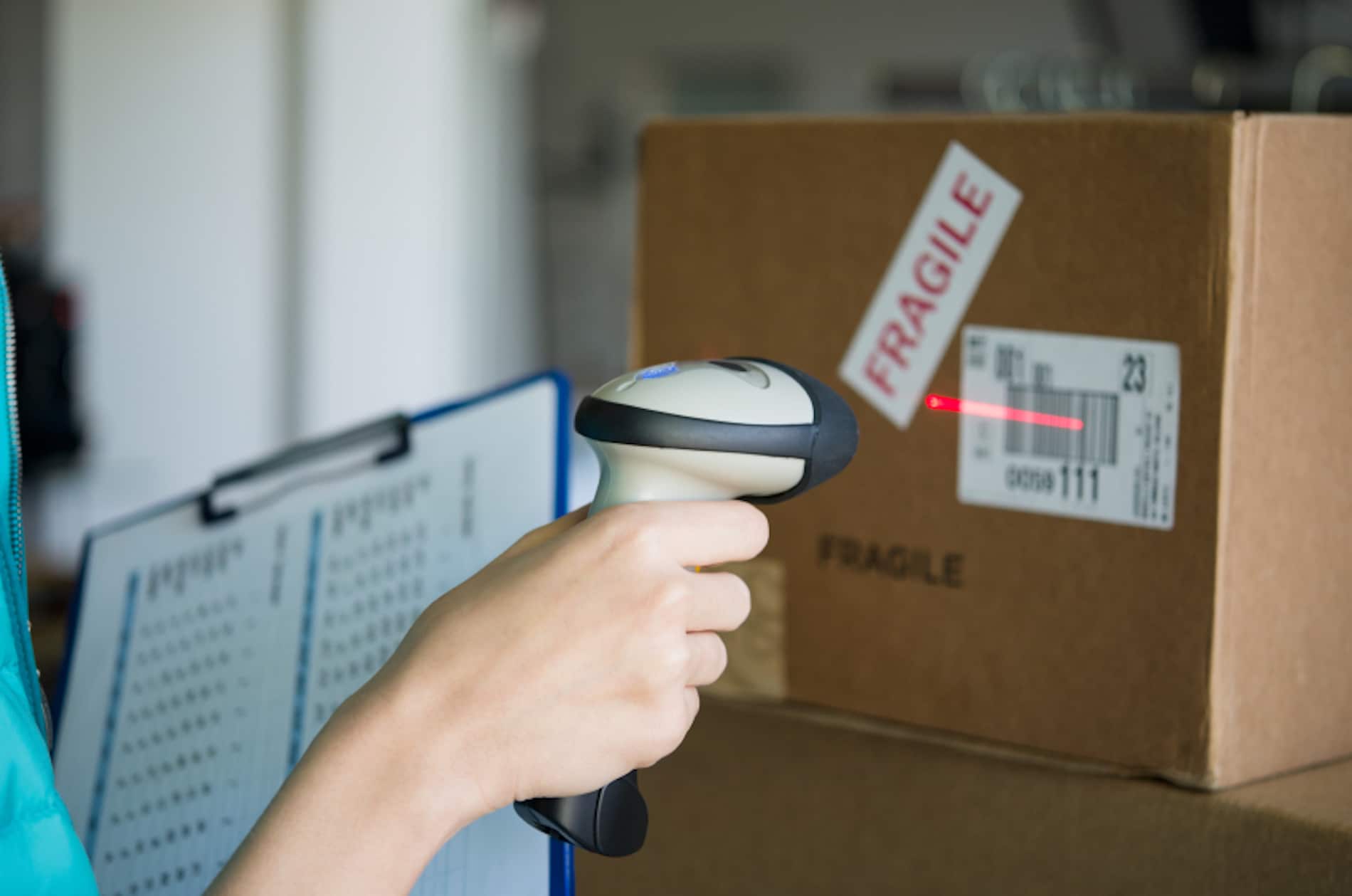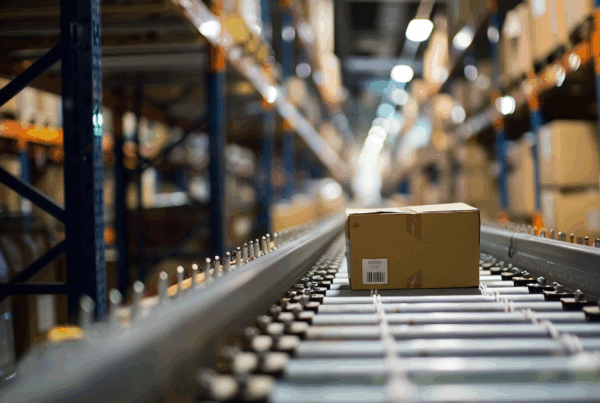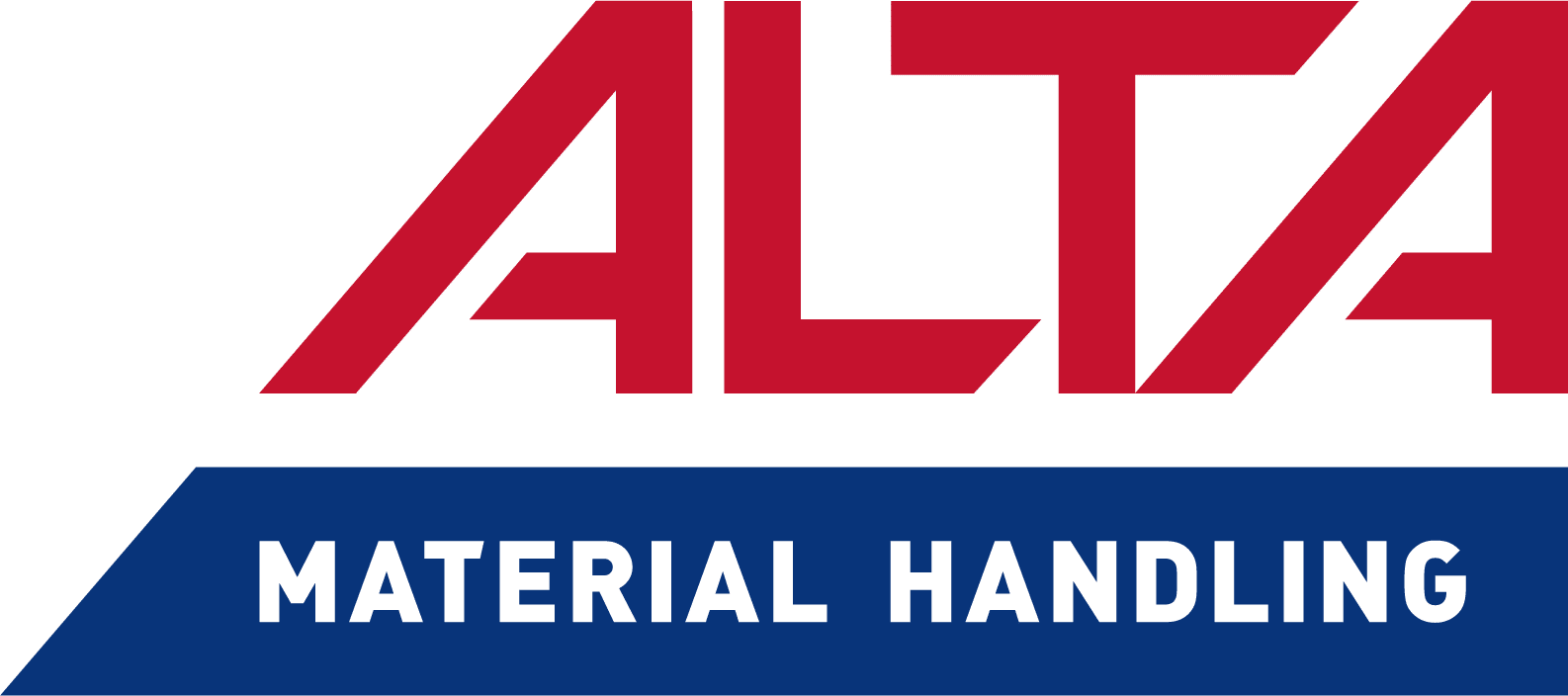What are barcodes and scanners?
Barcode labels and the automation that scans them are not a new invention. Since 1974, when they were first introduced to retail, their use in supermarkets and grocery stores has become universal. If you’ve ever paid attention to the cashier scanning your groceries – or used a self-checkout – then you are already familiar with barcoding basics. An item has a label affixed to it that is scanned by a machine.
In a grocery store this does two things: overtly, it allows the customer to be charged and inventory to be accurately maintained. But, for those of us who have never known life before scanners, barcoding also does some covert things for grocery stores – they increase the cashier’s accuracy and speed over the paper-based system that used to be employed.
Distribution centers, warehouses, and manufacturing facilities can gain these benefits and more from barcoding; labels and scanning automation can become an integral part of an operation. Barcoding is the step in the process that allows the warehouse management system (WMS) to gain information about the physical object to which the label is applied.
Benefits of barcoding
Any organization that manufactures, picks, moves, sells, or sends products can benefit from barcoding. A small business that handles 30 items a day can invest in a small printer and scanner and benefit from the improved accuracy that barcoding provides.
As that business grows, that same technology can be scaled up and used to guide pickers to a picking location in a large warehouse, or installed on conveyors to automatically read the barcodes on merchandise, boxes, or totes as they come down the line.
Because of the technology’s versatility, barcodes and scanners run the gamut of complexity. While both printers and scanners can be small enough to be either worn or carried by operators, they can also be much larger, affixed to industrial equipment, and designed as part of a conveyor or other system.
Among the benefits that barcoding allows are:
- Real-time communication: Any time a barcode is scanned – usually when stock is replenished, picked, changing zones, or packaged – the information is sent to the WMS. That information can be used to prompt next activities in the process.
- Tight inventory controls: Because the scanners communicate directly with the WMS, inventory can be tracked from replenishment to shipping. Not only does the system know how much stock is on hand, but it knows where each piece is throughout the facility.
- Improved accuracy: Automation isn’t perfect – labels can be smeared, misapplied, or torn – but computers don’t transpose numbers or misread or misspell words in the way that human operators do. Moreover, because the processes of creating, applying, and scanning barcodes can all be automated, barcodes have the potential to significantly decrease error rates by as much as 50% or more. As the WMS receives an order, it can relay instructions to a print and apply labeling system, automatically beginning the fulfillment process. Later, items move past a scanner on a conveyor, and the system can instantly verify that what is being scanned is what is supposed to be scanned.
- Enhanced productivity: Inaccurate transactional data can increase a facility’s labor costs, some sources claim by as much as 25%. Barcoding offers efficiencies gained through accuracy of product information as well as time savings by enabling the WMS to tell operators, or their automated equivalent, exactly where in a facility they can find an item.
- Better customer relations: Because the WMS tracks items in real time, customers can be informed about where their purchase is in the fulfillment process.
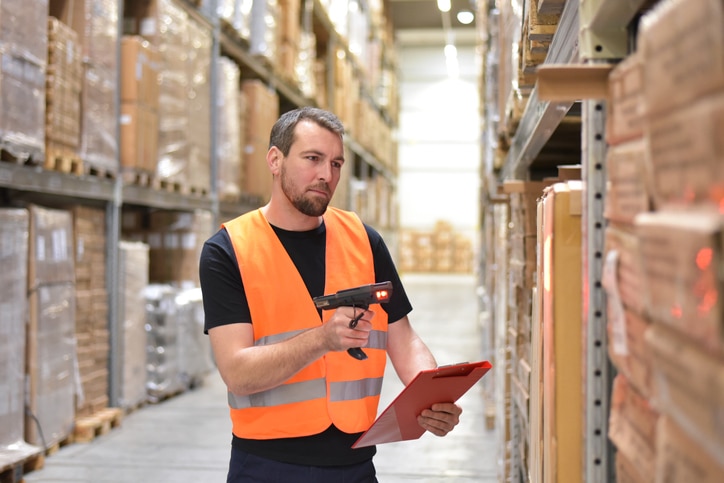
Warehouse worker in a warehouse with the barcode scanner.
Varieties and applications
Aside from its scalability, another reason barcoding has become so universal is the ease with which it transfers data of any kind. If there is information about an item that is useful for the system to know at any part of the process – weight, dimensions, quantity, destination, timeframes, or anything else – it can be assigned to that barcode.
Because of this versatility, there are many kinds of barcodes and scanners, each designed for a particular purpose, and a single facility may benefit from multiple kinds. For example, if one zone of a distribution center has been upgraded with conveyors, it may install a print and apply system to create barcodes quickly and automatically to track the carton, tote, or cases as the items move down the line.
At the same time, other zones within the same warehouse may still be picking-to-pallet or using other means. In these zones, the picker will need a handheld or wearable scanner. Finally, operators engaged in put-away and replenishment in these zones will need both portable laser printers and scanners to match the right product to its pick zone or station.
Directed picking automation and directed cartons to pick zones
Barcodes can be affixed to individual pieces, which allows the WMS to know where that piece is and to track its movement through the fulfillment process.
Barcodes can also be affixed to totes, bags, cartons, and boxes. This allows the WMS to track an order as its being filled. When an order is placed, a barcode is made and applied to a tote specific to that order. When that label is later scanned, the WMS directs the reader to the next step in the fulfillment process, whether that’s a new picking location or zone, or a pack-and-ship station.
This can be used in both manual and automated picking. An operator might scan the barcode and, reading the display, take the tote to the directed picking location or set it on the proper conveyor. Or, advanced systems can automate the process of printing and applying the label, and sending it to the proper destination, without any human intervention.
An order with more than one piece might move through multiple zones. For example, in a pick-and-pass system, after items are picked from one zone, the order is passed or diverted to the next. Each time the item changes zones, the system scans the barcode to ensure that the item or tote is in the right place at the right time with the right materials.
Automated and end of pick sortation
Efficient sorting is another facet of barcoding that drastically reduces manhours and potential injuries while increasing accuracy and speed.
Instead of being picked discretely, items can now be picked in batches or waves to automate the tedious, error and injury-prone process of manually sorting items.
In batch picking, for example, items from different orders can be picked and put onto a conveyor at the same time. As they move down the line, the conveyor can scan the items automatically and then divert the items to the proper packing station using various types of divert technology, such as transfers, show sorters, or popup wheel diverts to name a few.
Similarly, in wave picking, items can be picked from different locations in a warehouse and put onto the conveyor system that automatically directs items from the same order, picked from disparate locations in the warehouse, to a single packing station.
In motion weighing and dimensioning
Barcodes improve accuracy not only because items can be scanned quickly and without human error, but also because of all the information that the WMS gains access to through the barcode.
This information potentially includes the weight and dimensions of every item in the warehouse. Once this information is stored in the system, it can be used in a number of ways.
An item or tote of items moving down a conveyor can pass in front of a camera or over a scale. While the item is in motion, the camera measures the dimensions and the scale measures the weight. The results are compared against the information stored in the WMS. Products that fall outside of expected parameters can be diverted without slowing operations.
Of course, both the weight and dimensions of an item also affect the cost of shipping; facilities equipped with these technologies often see decreases in shipping surcharges. And by better approximating the quotes, they can more accurately budget for shipping costs. In one recent project, we helped a medical supply distributor save over $100K in shipping costs using this technology as part of the integration.
Automated print and apply
Manually printing and applying barcodes is a time-consuming task with more room for error than some industries can allow. Manually applied labels can result in improper placement and erroneous reads of the barcode information.
For competitive industries, automated print and apply labeling systems have become one key in meeting goals in efficiency, accuracy, and customer service. We’ve worked with some clients who have saved 50 seconds of handling per package using print and apply. And with today’s technology, automatically printing and applying labels is more accurate than manual print and apply, even on delicate or uneven surfaces.
Label printers and applicators come in an assortment of sizes requiring a variety of space, but they can be compact enough to fit into most locations. From various application methods, one can be chosen to suit your needs:
- blow applicators for delicate or uneven surfaces
- wipe applicators for fast conveyors or long labels
- tamp applicators for smaller packages
- roll-on applicators for long labels
- swing-arm applicators for pallets, totes, or boxes
While each of these systems is better than manually printing and applying labels, there are some tradeoffs regarding space, accuracy, force of application, and speed that have to be considered when designing the right solution for your facility.
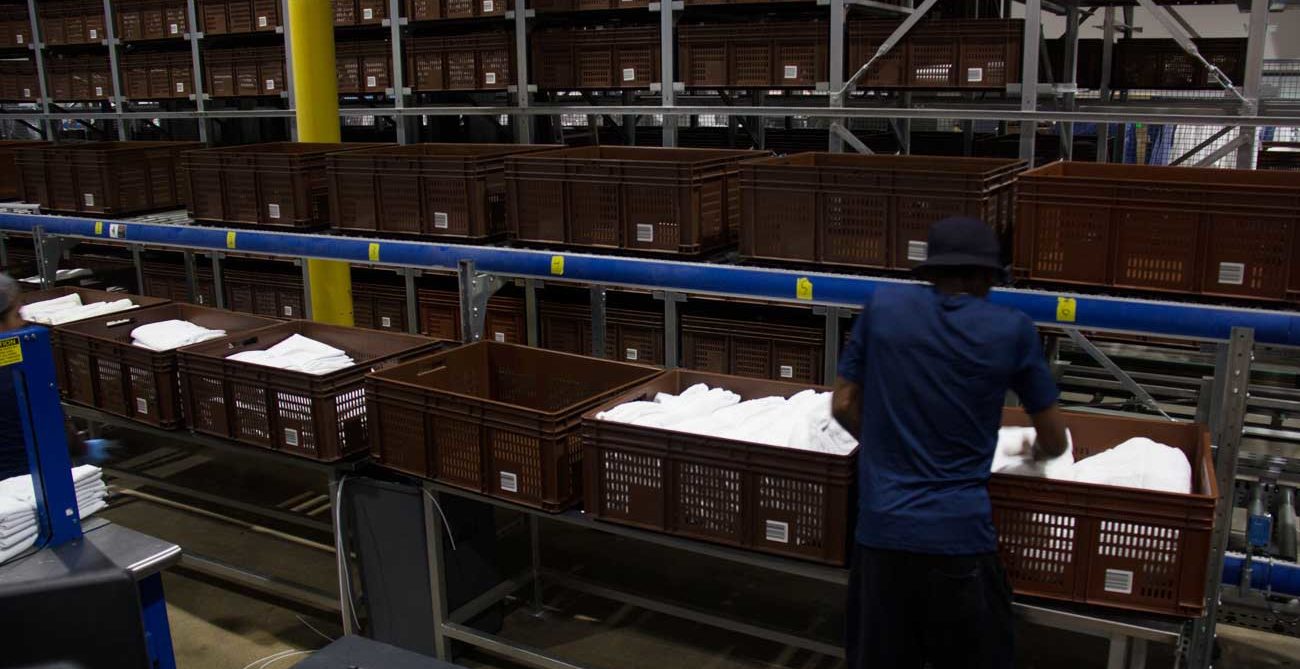
RFID assisted fulfillment in an automated dry cleaning facility.
RFID tags
RFID (Radio Frequency Identification) tags are similar to barcodes except that, instead of being scanned in the visual spectrum of light, they are scanned by radio waves. One upshot of this difference is that tags don’t have to be visible to the scanner – they can be embedded within the packaging of an item, within the item itself, or under a pallet of other merchandise. For example, PeakLogix recently helped an industrial dry cleaner integrate RF scanning technology to read the RFID tags embedded in clothing tags.
RFID tags are made of a circuit, antenna, and power source and are classified either as active or passive. An active tag’s power source is a battery. In a passive tag, the antenna usually also serves as the power source – when the tag is scanned, the interaction of the radio waves with the coiled antenna creates a magnetic field from which the tag is able to draw power. Active tags don’t wait to be scanned – they send out a ping every few seconds, informing any reader in the area of their location.
Passive RFID tags are cheaper, thinner, and more flexible than active tags. They also have longer lifespans, as they don’t rely on batteries for their power source, making them suitable for many kinds of industries and applications.
While active tags can be read from farther away than passive tags, the life of their battery is only 3-5 years. They are also far more expensive than passive tags, making them most suitable for applications where they can be reused. In industrial settings, single-use active tags can be prohibitively expensive.
Is barcoding right for your company?
One question our staff at PeakLogix is asked possibly more than any other is how large a facility has to be before any benefit will be seen in upgrading its systems. The question is a valid one, because not every facility will realize its ROI on something like an automated storage and retrieval system.
However, some of the world’s most competitive companies are applying the most advanced technologies to all of the problems faced in the order fulfillment industry.
Not all of their solutions are expensive, and facilities of every size can benefit from the introduction of some kind of automation.
When it comes to technologies such as barcoding and tagging – that can be introduced at very little expense and scaled up to the largest operations – it’s almost a no-brainer. Being able to properly label and identify merchandise is such an effective, affordable way to increase accuracy and speed that you could use it at your next neighborhood yard sale. And yet at the same time, it’s an essential component of world-class order fulfillment companies.

